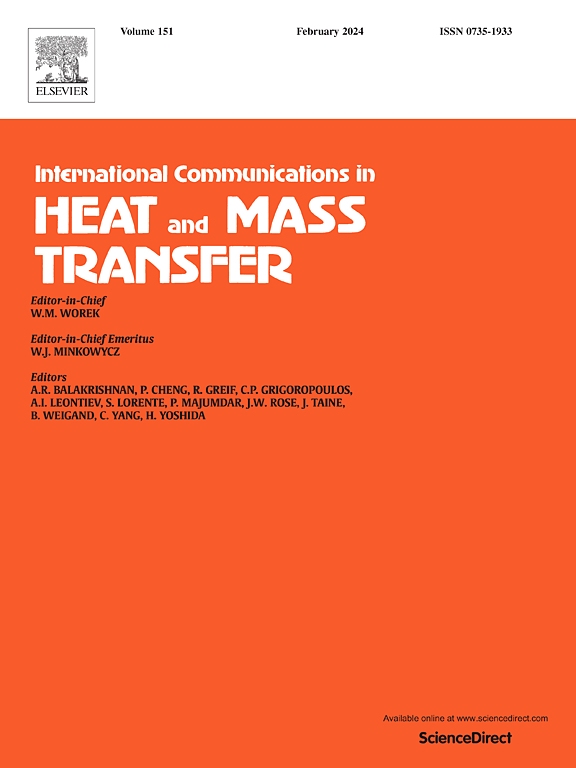Numerical analysis of saturated steam injection effects on steam turbine performance considering condensation losses and turbine stage efficiency
IF 6.4
2区 工程技术
Q1 MECHANICS
International Communications in Heat and Mass Transfer
Pub Date : 2025-03-22
DOI:10.1016/j.icheatmasstransfer.2025.108876
引用次数: 0
Abstract
Steam turbines play a crucial role in electricity production, and any enhancement in their performance can significantly reduce energy losses. During operation, steam expands in the low-pressure sections of the turbine where supercooling, can lead to non-equilibrium condensation (NQC), transforming the flow into a two-phase state. This NQC, an irreversible phase change, results in the formation of liquid droplets, which reduce efficiency, cause blade wear, and lead to mechanical damage. This study proposes the use of a saturated steam injection technique to mitigate the detrimental effects of the liquid phase on steam turbine blades. Given the high energy content of hot steam, saturated steam is selected for injection. Initially the effects of this technique on parameters such as pressure, temperature, and Mach number are examined. Subsequently, its impact on nucleation, droplet radius, liquid mass fraction (LMF), turbine stage efficiency (TSE), and condensation losses is analyzed. The results show that the saturated steam injection technique effectively reduces the liquid phase in the flow. However, it also reduces the TSE due to flow disturbance. Optimization of saturated steam injection parameters reveals that injecting steam at specific conditions (location 3, saturation pressure 140 kPa, injection slot width 0.09, inlet length and angle 90 degrees) results in a reduction in, LMF, condensing losses and vane inlet flow by (22.82 %, 23.69 % and 1.5 %, respectively).
求助全文
约1分钟内获得全文
求助全文
来源期刊
CiteScore
11.00
自引率
10.00%
发文量
648
审稿时长
32 days
期刊介绍:
International Communications in Heat and Mass Transfer serves as a world forum for the rapid dissemination of new ideas, new measurement techniques, preliminary findings of ongoing investigations, discussions, and criticisms in the field of heat and mass transfer. Two types of manuscript will be considered for publication: communications (short reports of new work or discussions of work which has already been published) and summaries (abstracts of reports, theses or manuscripts which are too long for publication in full). Together with its companion publication, International Journal of Heat and Mass Transfer, with which it shares the same Board of Editors, this journal is read by research workers and engineers throughout the world.

 求助内容:
求助内容: 应助结果提醒方式:
应助结果提醒方式:


